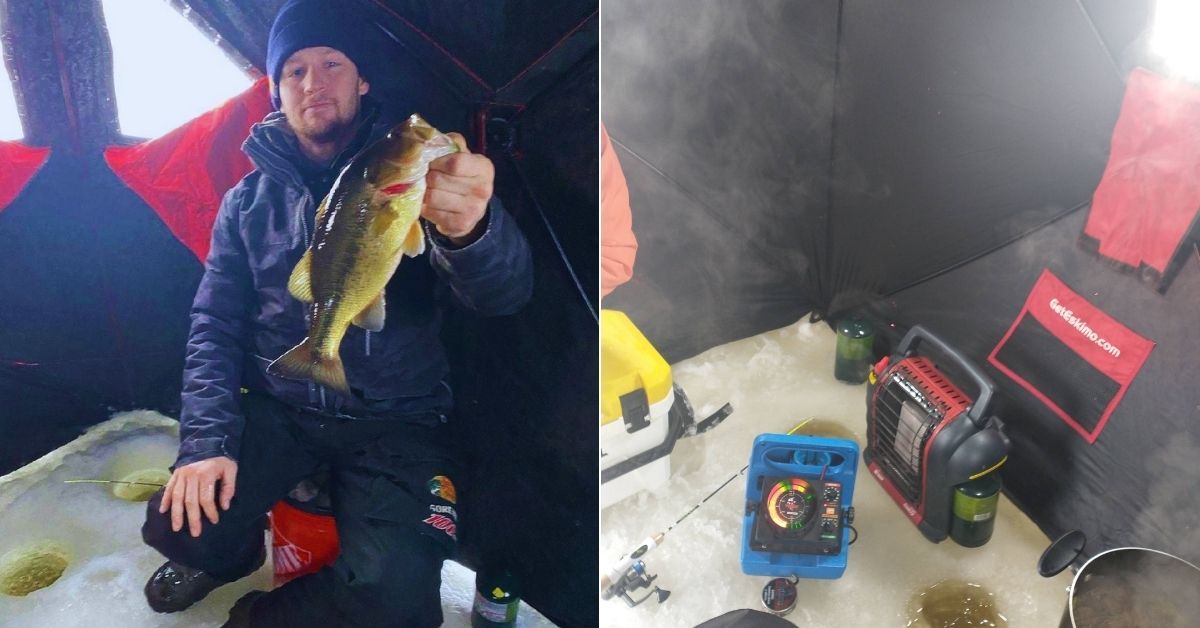
Catching A Bass On Accident By 9 am On New Years Day
|
|
Time to read 2 min
|
|
Time to read 2 min
On a blistering cold New Years' morning in Lacrosse, Wisconsin, I landed my first bass of the 2022 season. A plump, healthy, hard-fighting 14-inch largemouth pulled from the backwaters of the Mississippi River. I didn't it expect either. At the time, I was ice fishing and attempting to call in bluegill with a teensy tungsten jig tipped with a small waxworm. The jig was secured to 2lb test and rigged on a 26-inch ultralight ice rod, so when that bass hit, it took me for a ride.
2lb fishing line? Yeah, that wasn't a typo. This finesse set-up might seem slim and dainty, but it's essential when dealing with a finicky panfish on a cold winter day. Panfish can be picky eaters, and sometimes they strike so lightly it's nearly impossible to detect the bite. This is especially true with crappie, who will hit lures and swim up rather than pull down and give you that noticeable "tap." In these scenarios, the bite detection from the 2-3lb line makes a huge difference in noticing a strike.
Earlier in the morning, I set up a portable ice fishing shanty in five feet of water that sat directly between a thick patch of weeds and a steep breakline that led to deeper water. If you took four steps toward the shore and you'd be sitting in four feet of water amongst a jungle of shallow weeds. If you were to take ten steps in the other direction, you'd be in 18 feet which was the deepest spot in the area. This "in-between" location put us near the shallow weeds where backwater bluegill like to linger but also near deep water where the bigger fish might be roaming.

After dropping my jighead to the bottom, I'd pound my jig up and down off the bottom to help draw up muck and debris and hopefully alert a nearby fish. After 10-15 seconds of hard pounding the bottom, I'd begin to slowly raise my rod while slowly quivering its sensitive tip end. Slowly but surely, I'd continue to raise my bait in 1-3 inch increments before adding a brief pause. I'd continue this process until my bait was 1-2 feet off the bottom. Then, I drop back down and start all over again.
Most of my bites from bluegill came near the bottom while or shortly after I had made a few subtle jigs. They bit hard but only offered one quick "tap" before seemingly vanishing into thin air. The largemouth hit differently and was notably less subtle. Instead of the machine gun tap of bluegill, the bass pulled my rod tip straight down and immediately made a drag-peeling run.

After a brief battle that stretched the limits of my two-pound test, the largemouth was in reach and visible through the 6-inch ice hole. After one last heart-pumping pull, the bass laid off and made its way to the top of the ice and into my outreached hand. I clamped down with my thump, pulled out the bass, and hoisted it in the air for a quick picture.
After about 10 hours into the year, I wrangled in my first largemouth of 2022 and set a new standard for kicking off the new fishing season. Get out there and get after it because who knows what may decide to bite!